If you are looking for an athletic, energetic dog that’s also loyal, affectionate and loving, then the Labrabull is one breed to check out. A mix of a Labrador Retriever and the Pitbull Terrier, the Labrabull is a relatively new dog on the crossbreed block and mixes the distinct characteristics of its parent breeds. Also known as the Bullador and the Pitador, there’s no denying this is a heady combination but with the right handling and home set up, you will have a brave yet amiable BFF (best furry friend) .
We cut through the perceptions of the Labrabull to find out what makes this stunning dog breed tick so you can decide whether this bundle of strength, intelligence and affection is for you.
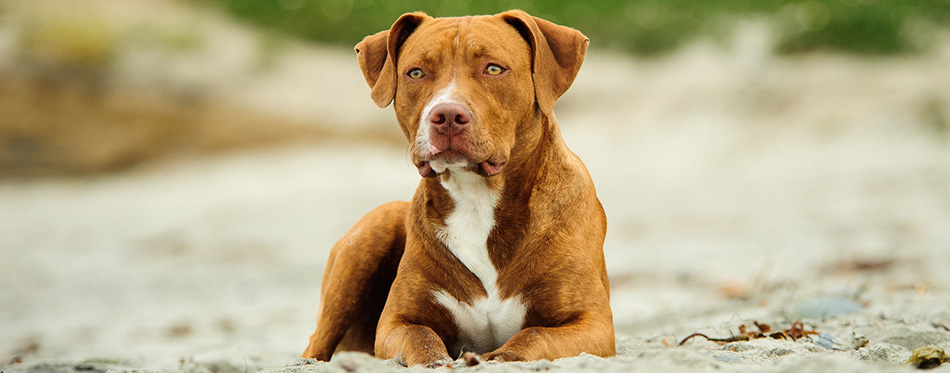
History of the Labrabull
Like many crossbreeds, the exact beginning of the Labrabull is not known and may well have existed naturally long before breeders started to mix the Labrador Retriever and the American Pitbull Terrier. It’s thought the formal start of the breed was in North America in the late 1990s, most likely driven by a desire to breed out some of the health issues that may have affected the pure breeds and also combine the characteristics of both dogs. It’s not clear whether there were any intentions for a new form of working dog; it was most likely to create another ‘designer’ crossbreed at a time when such dogs were fast becoming very popular pets.
There’s no denying the popularity of the Lab, and it remains the US’s most owned breed, thanks to its loving and sociable nature. On the other hand, the Pitbull is strong and loyal, but has been long dogged by a tough reputation, which many breed fans feel is unfair. The combination of both dog breeds results in a hybrid which is still a strong, loyal animal but with the softer characteristics of the lab, making it a unique dog for the right owner. And the Labrabull has grown in popularity in recent years, with owners now able to register the breed with the American Canine Hybrid Club (ACHC) , the Dog Registry of America (DRA), and the International Designer Canine Registry (IDCR).
However, the Labrabull is not recognized by the American Kennel Club.
Who Are the Parents?
While the origins of the Labrabull are a little sketchy, what we do have plenty of intel on is the parent dog breeds – the outgoing Labrador and the loyal Pitbull. We take a look at the family tree behind the mixed breed Pitbull Lab in more detail.
Labrador Retriever
Famous for their friendly, ‘even strangers are my best friend’ personality, the Labrador Retriever is one of the most popular breeds in the US, although they originated from Canada. Originally bred in the 18th Century to work alongside Canadian fishermen, the Lab is also a trusted, reliable pooch, that also earned its place as one of the best family dogs. With a medium to large build, the Lab is athletic and sturdy, traits that hark back to their Canadian working dog days. Known for their loyal, intelligent and ‘eager to please’ temperament, Labs work well with a range of age groups as well as other animals. They also make excellent police, service and therapy dogs due to their trainability and even personality. However, the Lab is enthusiastic and pin-tack sharp so needs plenty of exercises.
The Labrador Retriever also makes a popular choice when it comes to cross breeding as the Lab temperament is a good balance for other pure breeds.
For more options, check out our detailed review of the Best Dog Food for Labs.
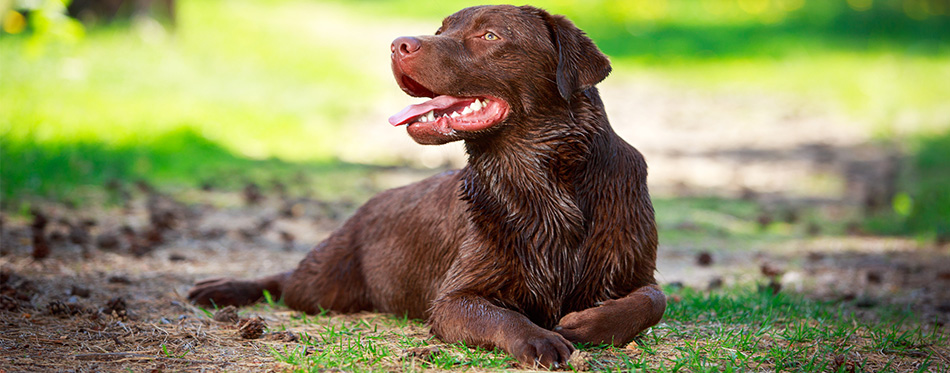
American Pitbull
The Pitbull dates back to the UK in the 1800s when bulldogs were crossed with terriers to create the Pitbull breed. With bulldogs used for blood sports such as dog fighting, ratting and bull baiting, there was an appetite for a stronger, faster dog so the bully was bred with the terrier to create an athletic fighting dog – the Pitbull. But behind this unsavory start, the Pitbull was also affectionate, developing a fierce loyalty to its owners. When the Pitbull came to the US, the American version was actually used as farm dogs to help protect livestock and herd sheep, and their surprisingly docile nature saw the breed move from the barn and to the family hearth.
The fighting origins of the Pitbull still overshadows its reputation today but as a breed, the Bull has proved to be loyal, protective, obedient and gentle, especially with its human family. But it is built to be strong and muscular and tends to have a dominant personality so need clear and consistent guidance, training and socialization.
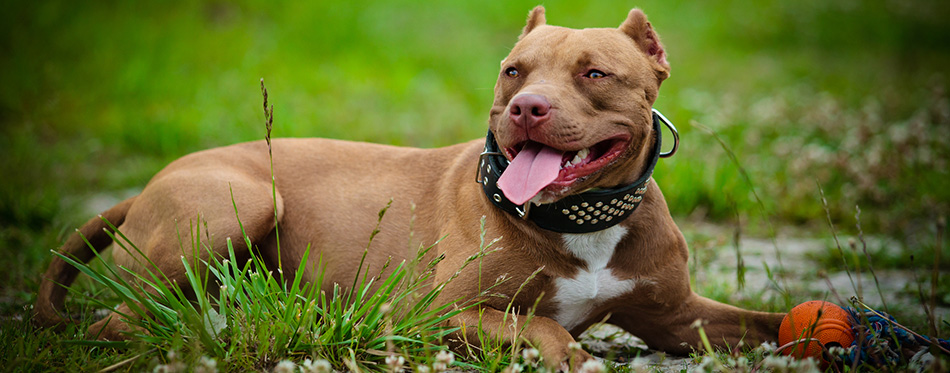
Quick Facts
While not one of the most common crossbreeds, the Labrador Pitbull mix shapes up to be a pretty awesome dog. But there are some pros and cons to the breed. Here are just a few quick facts on the Labrabull to help give you a head start on this fascinating breed:
- They’re not a first-time dog – as much as they are loveable and loyal, the strong-willed nature of the Lab Pit means they could be too much of a challenge to the novice. A knowledge of positive dog training is needed to make the most of this breed.
- The dominant colors of Labrabulls are black, white, gray, brown/tan and silver. Most Lab Pit dogs are black with white accents on their coat.
- The short and at times quite sparse coat of the Labrabull means they are not suited to very cold weather.
- This Lab Pit mix loves company and can develop destructive behaviors if left alone, due to separation anxiety.
- With Labrabulls weighing in between 45 to 90 pounds, the males are typically 30 pounds heavier than the females.
- As a muscular, athletic dog, the Lab Pit can grow up to two feet in height.
- Occasionally a Labrabull can inherit the long, floppy ears of its Labrador parent!
Things You Should Know
The Labrabull’s life expectancy will typically follow that of its parent breeds, meaning the average lifespan will be between 10 and 14 years. As a Pitbull Lab cross breed, you can expect to pay around $400 for a Labrabull puppy, although they are known to sell for cheaper as some people are wary of the Pitbull side. As well as ensuring you are buying your pup from a reputable breeder, there are some other essential facts you need to know if you are considering welcoming a Labrabull into your home:
Training
With both Labradors and Pitbulls known for their intelligence and trainability, the good news about the Labrabull is that it will take to training. However, it’s important to start as early as you can – training Pitbull Lab mix puppies from around eight weeks is ideal. With the strong personality of the Labrabull, leaving training too late could lead to stubborn or strong-willed clashes later on. The nature of the Pitbull Lab breed means that the Labrabull will respond to consistent training, using positive reinforcement methods. This also makes the Lab Pitbull mix rewarding to train. The loyalty factor in the in the Lab Pit mix means they are eager to please; just keep their training upbeat and positive, as any harsh training can lead to issues of distrust.
Related Post: Dog Training Books
Feeding
As a high energy, medium sized dog, the ideal dieter the Pitbull Lab should work to sustain their activity and build, without feeding their tendency to put on weight. A regular feeding schedule is the way to go with the Labrabull – avoid free feeding and carefully manage their treats. Any dry or wet dog food formulated for either of the parent breeds, or for high energy dogs are best, ideally high protein to sustain their healthy, on the go lifestyle. And if your Pitbull Lab is susceptible to allergies, look for grain free dog food.
For more help on choosing the right dog food, you may wish to check out our reviews of the best dry dog food, grain free dog food, high protein dog food, dog food for pitbulls, and puppy food.
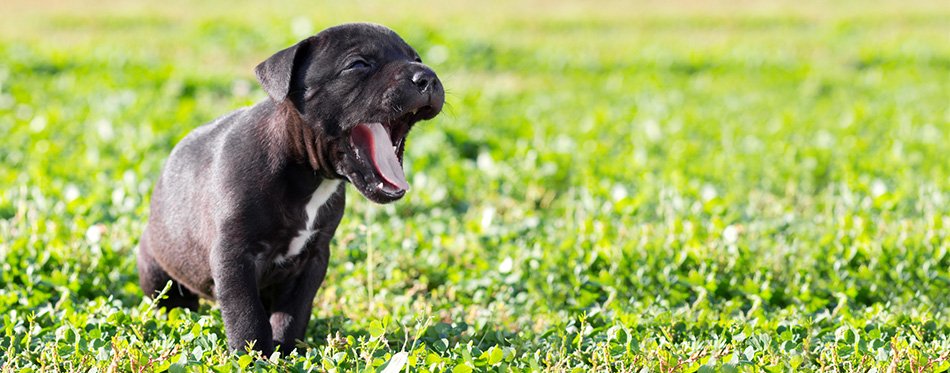
Exercise
Although they have bundles of energy, Labrabulls are also prone to put on weight if they are allowed to become too sedentary so regular daily exercise is essential. One hour a day is the minimum, more if you can as your Pitbull Lab has a lot of energy to work off and keep them healthy and happy. At home, he also needs some roaming space, so a large yard or garden is also a must, and they need to be played with too, to keep that brain positively active and entertained. Another likely trait of a Lab Pit mix is that they are chewers, so durable chew toys are a must.
Related Post: Dog Toys
Socialization
Just like its Labrador and Pitbull heritage, Labrabulls love people, but early socialization with humans and other pets is essential to keep things friendly and not over the top. However, as there’s no way of knowing which parent trait is going to be the most dominant in your Pitbull Lab, it’s essential to manage any new interactions and never leave them unsupervised with children. And take your time with other pets, as the Pit personality may be dominant, unlike the Lab that loves to mix and make new animal as well as human friends.
Grooming
The Pitbull Lab mix is typically low maintenance when it comes to their grooming needs. Labrabulls have short haired coats which are pretty low on the shedding scale, although if they have Lab as the dominant trait, they may inherit the Labrador double coat. A full brush once a week will keep the coat of most Labrabulls in shiny, healthy condition but they may need brushing more frequently if they have the denser Lab coat. However, Pitbull Lab mixes are known for sensitive skin, so be careful with the dog shampoo you use and monitor their skin for any allergies.
Related Post: Dog Shedding Brush
Health
Whilst the Labrabull is considered a pretty healthy mix breed, there are some Labrador and Pitbull health problems they may be susceptible to. As well as skin allergies and the tendency to put on weight if overfed or not exercised enough, you also need to keep an eye out for:
- Elbow and Hip Dysplasia – this is an inherited condition where the boned don’t fit correctly in the socket, leading to pain and mobility issues as well as arthritis as your pooch gets older.
- Separation anxiety –due to their loyalty to their humans, both Labradors and Pitbulls can develop separation anxiety if left alone for too long or not socialized sufficiently. This means the tendency to be anxious could well affect the Pitbull Lab mix.
- Hereditary Cataracts – this condition comes from the Pit side of the family and can affect both puppies and adult dogs.
- Epilepsy – although all dogs can have an epileptic seizure, they are more common in certain breeds, including Labrador Retrievers so your Pitbull Lab mixed breed could be susceptible.
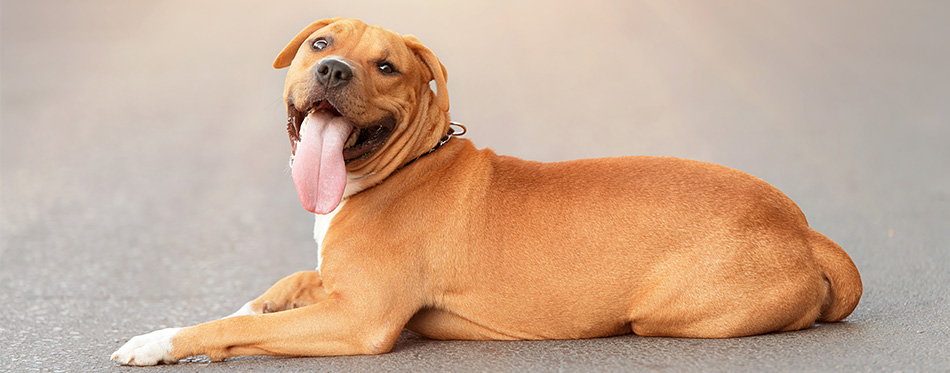
Temperament
When it comes to the Pitbull Lab Mix temperament, the Lab Pit is definitely high energy, and more ‘out in the backyard playing fetch’ than snuggling up as an afternoon lapdog. But that said, they love their humans and are not afraid to shower them with affection. And what is surprising about the Pitbull Lab is that they can be spooked and also love a good cuddle, so not so much the tough guy you would think!
But they do have power and their Pit fierce loyalty towards their human/s could be a little problematic if they are not positively trained and socialized. However, with consistent training, handling and home ground rules, you will be a lucky dog owner, as the Labrabull is intelligent, engaging and gentle. And they do love children, although they could be a tad boisterous for younger tots and, as with most dogs, should only be with your kids under supervision.
In short, Labrabulls are awesome animals, bringing together the many positive traits of the Labrador and the Pit Bull with a combination of loyalty, strength and intelligence enhanced by a huge capacity to love and be loved. But the Pitbull Lab is active and strong-willed so not suited to a novice dog owner or families with very young children. And while they are normally big softies, they can be energetic and have the potential under certain circumstances to be aggressive, so you really do need to know what you are doing. But if you do, then with a Labrabull you’ll have a loyal and loving four-legged friend and family dog for life.
Source:
- The Pitbull Lab Mix – Animal Corner

